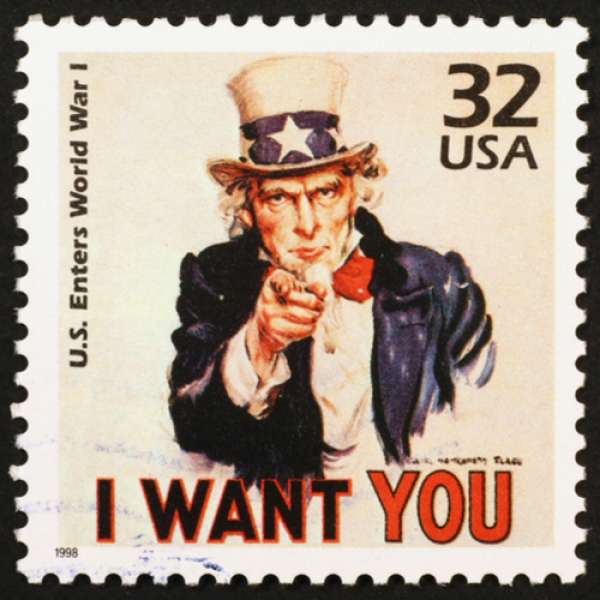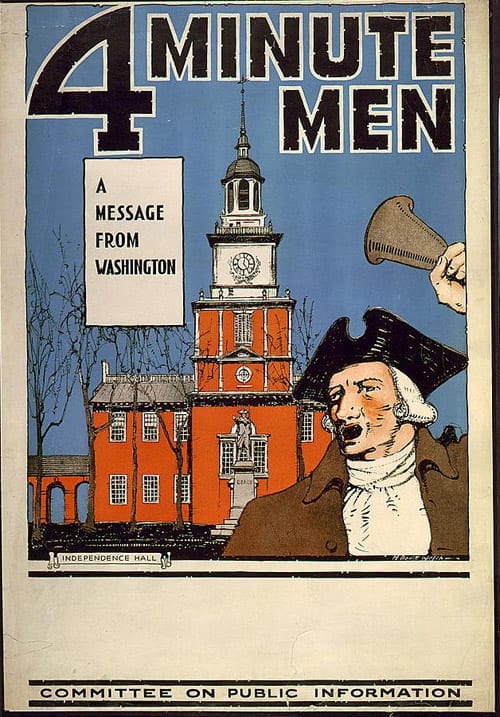Uncle Sam Wants YOU To Practice Multichannel Marketing

One would be hard pressed to find an adult in America who would not recognize the name “Uncle Sam,” and even less likely to find someone who couldn’t recall the famous “I WANT YOU” WWI recruitment image. Not only has it been seen in every history classroom across the country, but it has also inspired millions of spinoffs in various marketing strategies. It would be an accurate statement to say that this is one of the most powerful, and popular, images in history, let alone marketing history. What’s less known, however, is the marketing strategy that led to the image — and the movement that strategy started.
First, let’s backtrack. Uncle Sam’s origin is said to begin with Samuel “Uncle Sam” Wilson, a meatpacker from Troy, NY, who fed U.S. Army soldiers religiously during the War of 1812. While there are many early images affiliated with Uncle Sam, none truly stuck until the creation of the previously mentioned recruitment image. The visage portrayed here is not that of Samuel Wilson, however, but of the illustrator himself, James Montgomery Flagg.

In April 1917, near the beginning of WWI, President Woodrow Wilson needed to create a strategy to persuade Americans to support the war, as there was a lot of controversy on the topic. He authorized the creation of the Committee on Public Information (CPI), pulling in the brightest, most innovative minds in journalism, advertising, and design. They even hired Edward Bernays, the 26-year-old nephew of Sigmund Freud.
The committee’s first successful marketing move was getting over 100,000 American citizens to contribute ideas, designs, and concepts. Think about that for a second. They managed to draw in this incredible amount of voluntary input through what little means of technology they had available at the time. There was no TV, internet, or highly capable phone systems. Instead they utilized millions of press releases, bulletins, photographs, and posters and placed them in factories, churches, and schools, read them over the radio, and canvassed city streets (peer-to-peer marketing!). They even made silent films, such as “Pershing’s Crusaders” and “America’s Answer” in an effort to market patriotism in the form of Army recruitment. It was a true multichannel, integrated marketing strategy!
Aside from the posters, another one of the CPI’s more notable marketing methods included enlisting over 75,000 volunteers to deliver four-minute spiels about the war at social events. These “Four Minute Men,” as the volunteers called themselves, covered all of the topics citizens may have questioned: the draft, war bonds, rationing, victory gardens, etc. It is estimated that they gave about 75 million speeches to about 315 million people from about 5,200 communities. The reach demonstrated here is impeccable for a time that was so limited in channels of communication. Yet this seems to have been one of their most effective means of advertisement, second only to the “I WANT YOU” posters, which enabled a reach across all social classes and tax brackets. These Four Minute Men acted as early data collectors, as they were able to come back with specific information pertaining to each sector of society, including what they expected from the war and what outcomes they anticipated. This information enabled the CPI to tailor their message to all citizens. Even in its early stages, the CPI realized it needed to appeal to the emotion, not the intellect, of the American people.

These early techniques are still used today in the marketing world. We reach out through multiple channels based on preference, perform market research via focus groups and surveys, and segment audiences based on behaviors and demographics. The Uncle Sam image and the CPI’s data collection make up a rudimentary version of advertising as we know it today. Now it is up to us to continue their legacy by creating innovative content while simultaneously understanding the age-old concept of customer-specific marketing. The question is, what can you do to pave the way to the future of integrated multichannel marketing?
